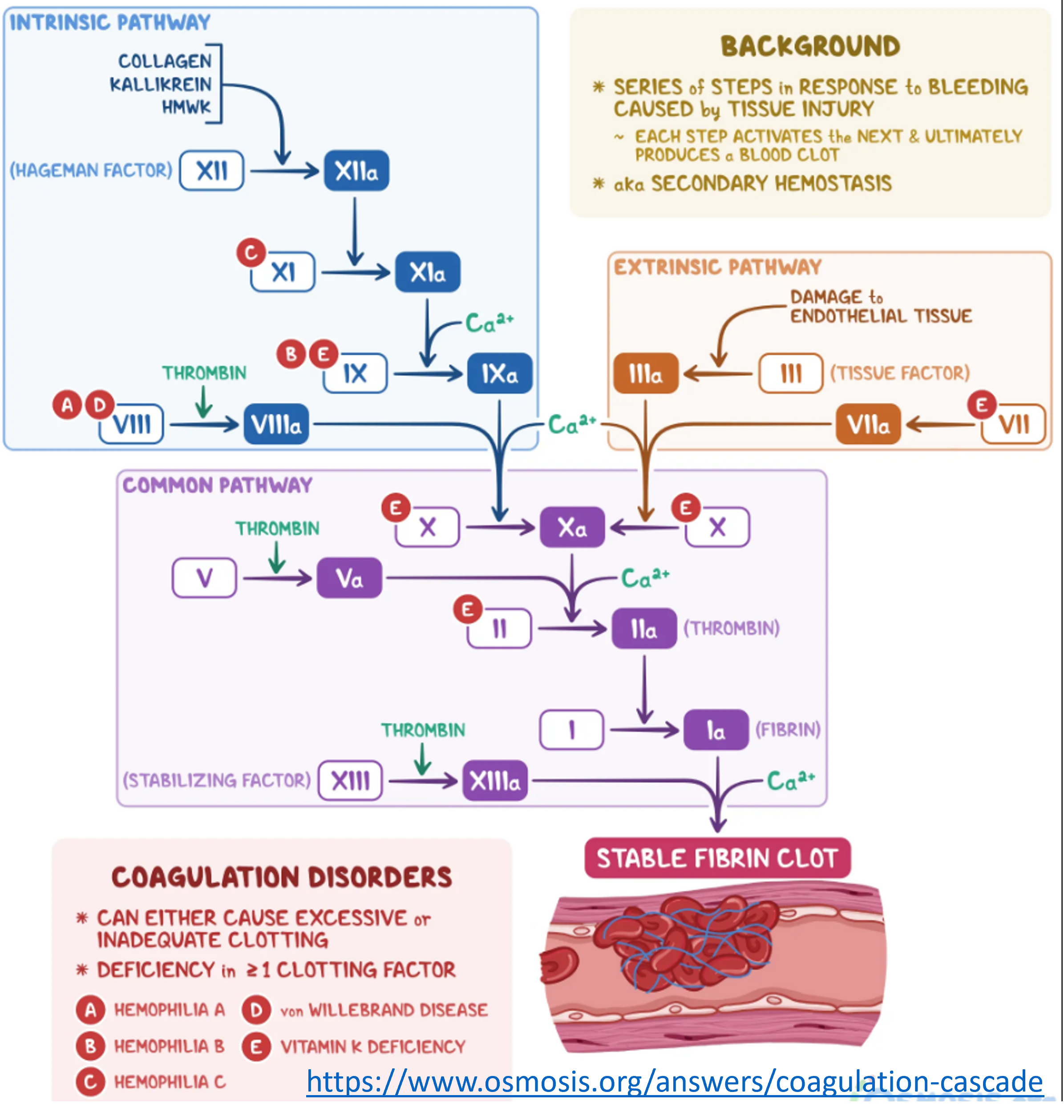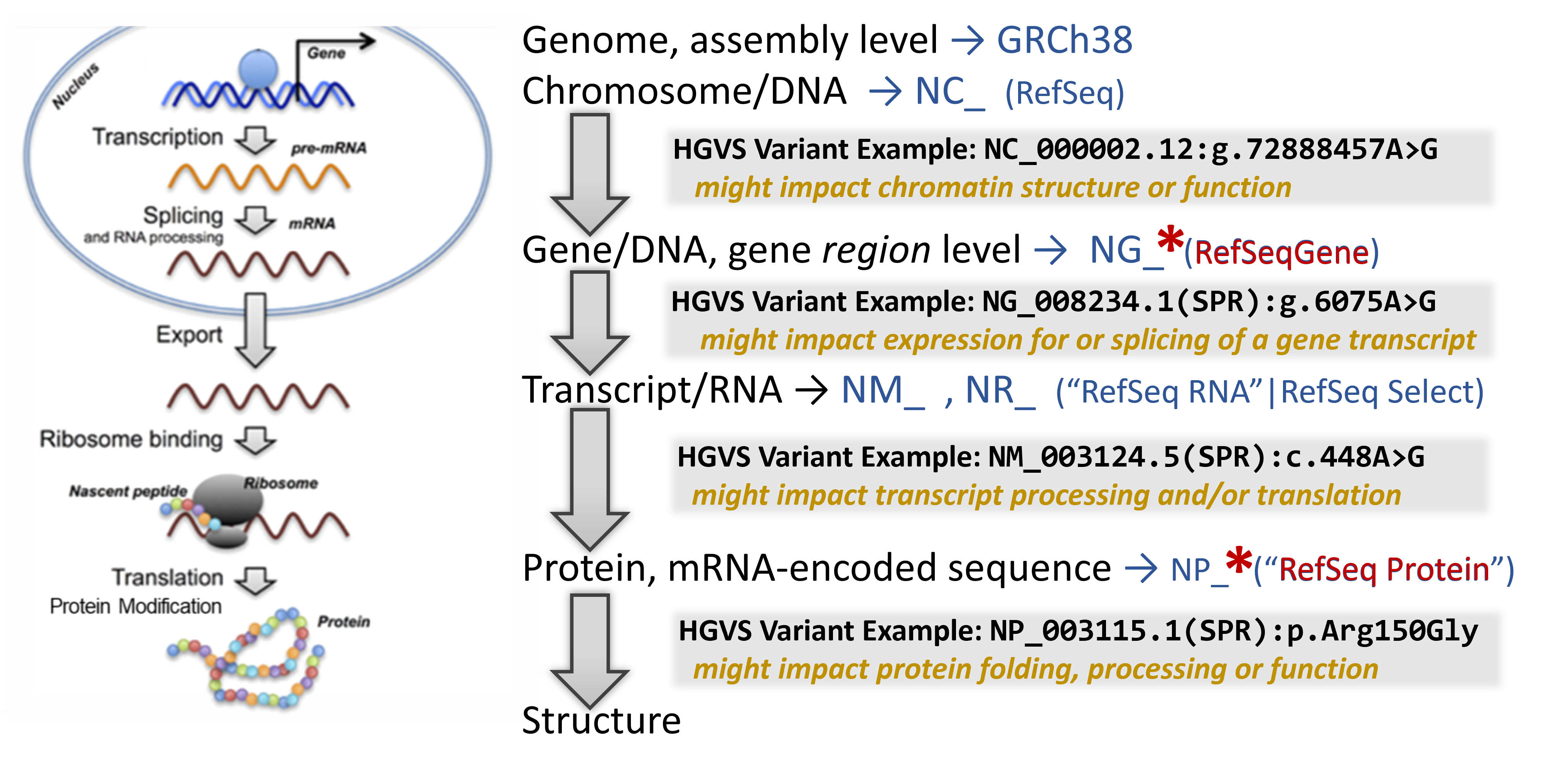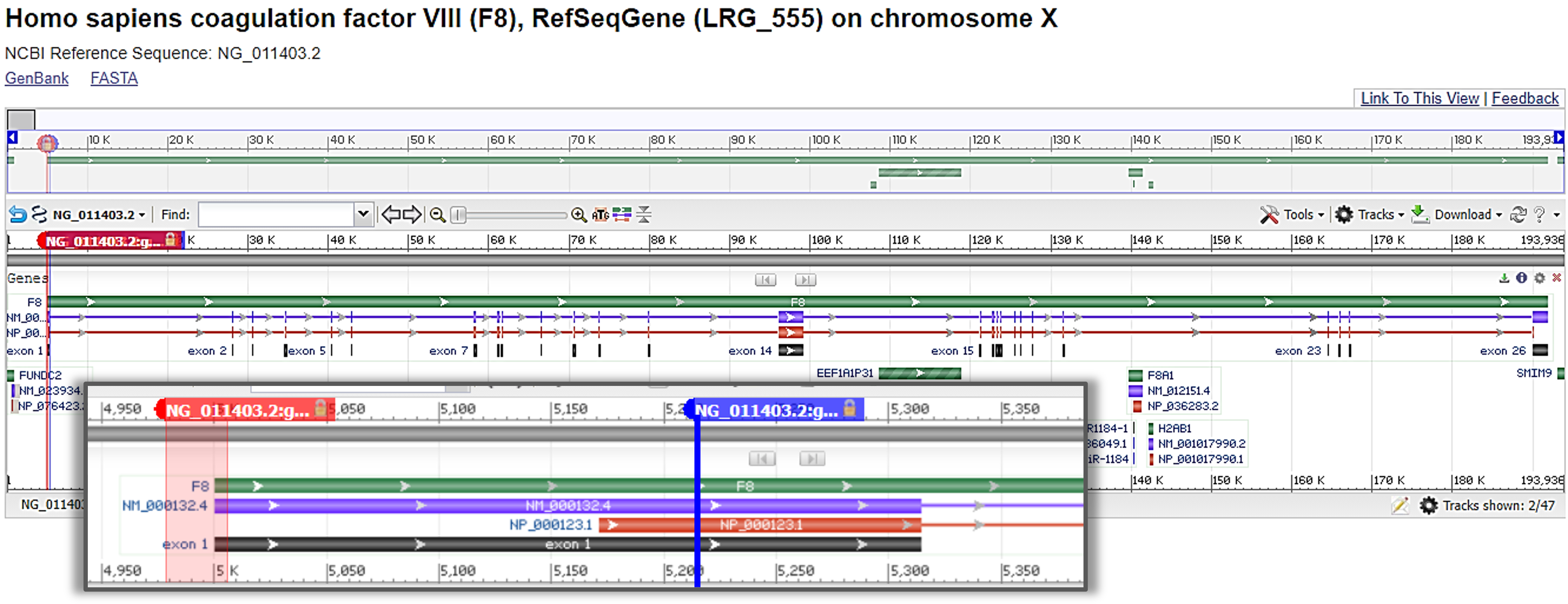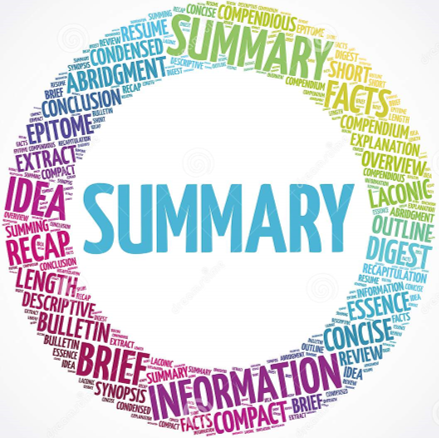Group Cases: Marco, Alexei, James & Bo
The cases
  |
  |
  |
  |
What do we know about your patients' phenotypes?
In this scenario, each of four boys was referred to the genetics clinic because their preliminary diagnoses suggested they might have a particular condition impacted by potentially pathogenic genetic variation(s). If a known pathogenic genetic variant is found, it could validate the diagnosis and confirm a specific subtype for that disorder and might impact your options or choice for optimal therapeutic intervention.
| Marco | Alexei | James | Bo | |
| Phenotype (including severity) | ||||
| Preliminary Diagnosis |
What do you know about Hemophilia?
Does genetic testing make clinical sense?
What could you do with this information, if you can get it? (Is it "actionable"?)
Does genetic testing make clinical sense?
What could you do with this information, if you can get it? (Is it "actionable"?)
What does the patients' genetic test reports say?
In this scenario, the genetic test was selected and performed. The results have come back from the laboratory and have been sent to you for consultation.| Marco | Alexei | James | Bo | |
| Genetic Variation(s) | ||||
| Laboratory Assertion(s) |
Do you think the differences in symptoms are due to the genes?
Do you think the severity of clinical features could be due to differences in variant impact?
Do you think the severity of clinical features could be due to differences in variant impact?
What is currently known about the identified variants?
Genetic testing laboratories attempt to stay up to date with what is known about the genetic variants that they are assessing. However, it is sometimes valuable to quickly consult with national database of clinical variants (NCBI's ClinVar database) to learn what other organizations have asserted/interpreted for that variant, if anything. In addition to information from testing laboratories, ClinVar receives curated interpretations from authoritative sources such as ClinGen, ACMG and disorder-specific specialist panels. |
 |
 |
 |
|
ClinVar Variant Information:
|
||||
How could you keep up-to-date with potentially changing asserted interpretations?
Do you think this might be important in clinical care?
Do you think this might be important in clinical care?
What is currently known about the identified gene?
If a particular gene has been implicated in a genetic test results indicating a pathogenic variant exists in a patient, it is often helpful to understand what that gene is, what its normal function is, where it is found (cellular and tissue expression patterns), and other sources of accessible information, such as links to relevant scientific literature. NCBI's Gene database aggregates data from many NCBI databases as well as other high-quality resources to provide information and links to help users find and understand what is currently known about a particular organism's gene.| Marco | Alexei | James | Bo | |
Gene Information on the NCBI Gene record:
|
||||
Does what you've found above make sense based on the patients' symptoms, in general?
NCBI's Literature resources (PubMed, PMC, the Bookshelf) have lots of helpful information including things similar to things like this...

Map the variant through the bioinformatic flow!
Now that we understand which gene may be affected by the presence of the detected variant, mapping the variant through the central dogma of molecular biology can help indicate at which point it has its strongest impact.
 Click here to review an overview of the central dogma and genetic variation.
Click here to review an overview of the central dogma and genetic variation.

In addition to a lot of helpful aggregated information, NCBI's Gene database provides links to visualization tools which can help to identify where a variant is located in several critical biomolecules.
| Marco | Alexei | James | Bo | |
|
Is the variant present in the following and, if so, what is the molecular impact?
|
||||
 Click here to see the first 2 cases' variant mappings.
Click here to see the first 2 cases' variant mappings.
Here's the view of the chromosomal region, including the gene and transcript and protein coding regions.

Let's put it all together to understand what is happening in the patients!
The summary below is the kind of statement that could be used in presenting the information to your Attending Physician.
"What do you think is wrong and happening with your patient?"
 |
 |
 |
 |
|
| Diagnosis | ||||
| Genetic Variation(s) | ||||
| Proposed Molecular Mechanism of Variant Impact | ||||
| How does this relate to the phenotype? |
Take-away message!
Workflow: We've practiced the step-by-step process to learn more about a patient's genetic variant that can be used for almost any variant.
Genetic disorders & molecular pathology: We've learned that predicting the likelihood or timing of onset, severity, and/or progression of a genetic disorder based on a patient's genetic variant(s) is not as clear and simple as we'd all like it to be.
- Different genetic/molecular mechanisms may produce similar phenotypes/disorders - Most observable symptoms are due to physiological processes which involve many components, several of which might cause a similar downstream impact.
- For example, all four boys' clotting issues appeared to be similar (although of varying severities). In these cases, two different poorly- or non-functioning regulatory proteins caused a similar downstream effect....they could not clot. By pure observation it is not possible to differentiate the molecular cause.
- Patients with the same affected gene may experience different levels of symptom severity or even diagnosable conditions.
- For example, Bo's bleeding issues were less severe than Alexei's.
- Knowing the precise genetic lesion causing the patient's disorder can assist in clinical decision making for therapeutic selection.
- For example, effective recombinant clotting factor replacement or gene therapy for Hemophilia requires targeting the specific pathological mechanism - the specific malfunctioning blood clotting factor.
ANSWERS
Last Reviewed: August 24, 2023







